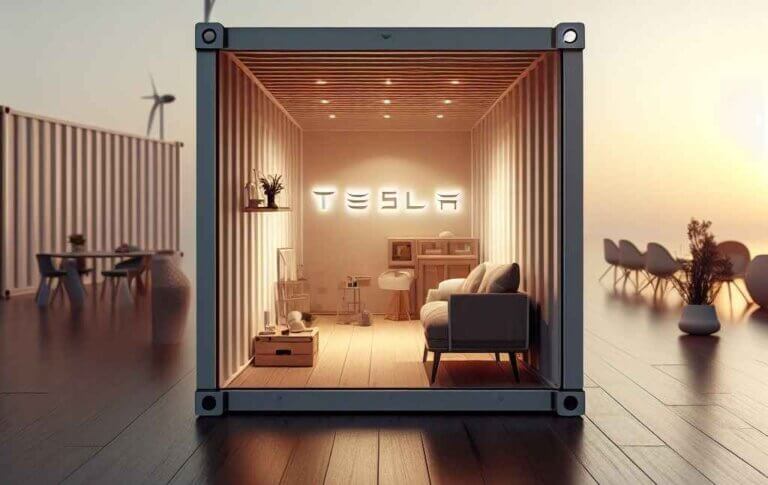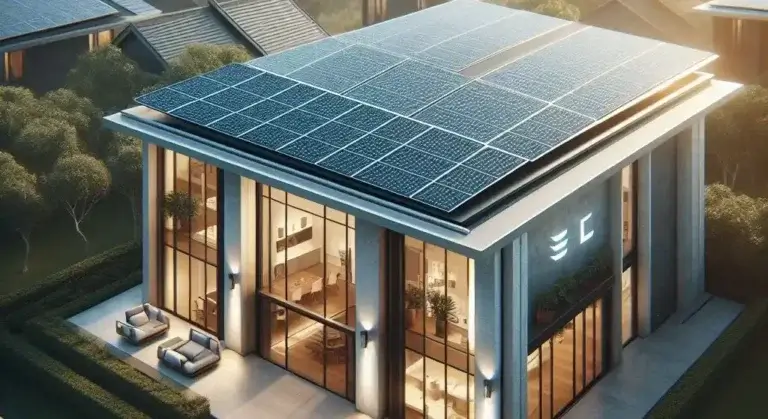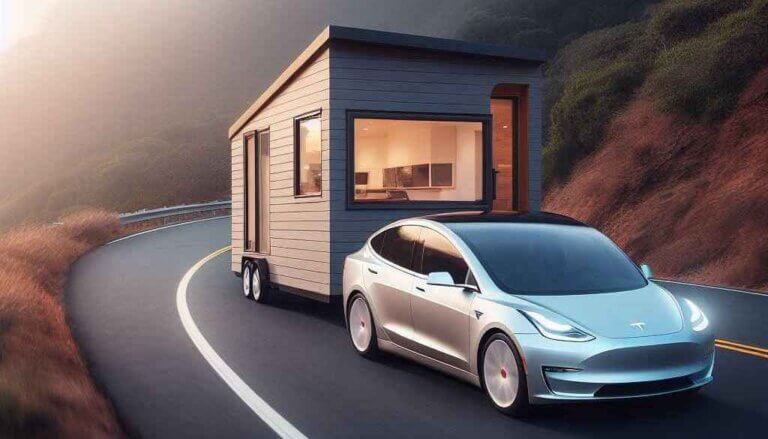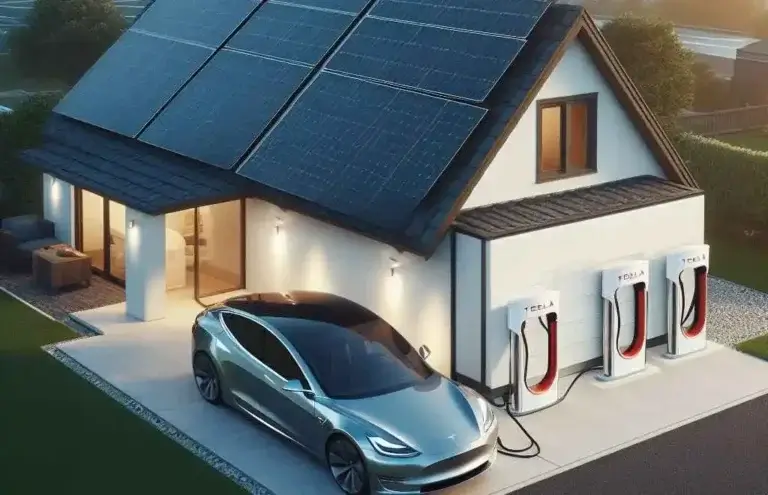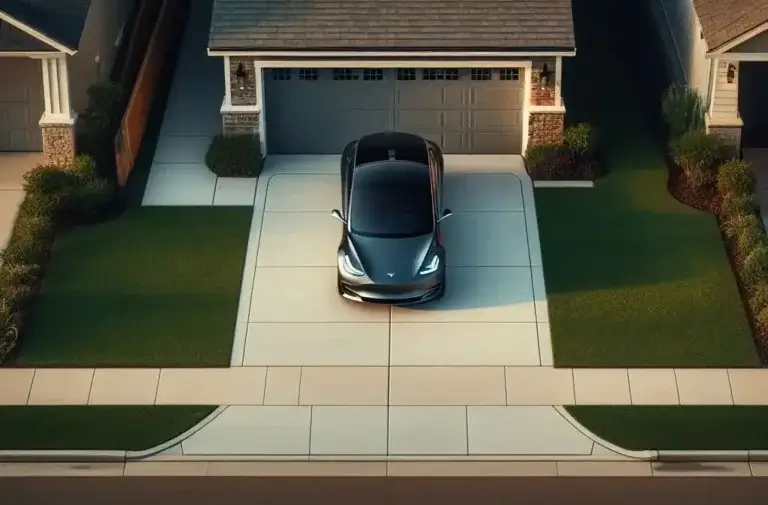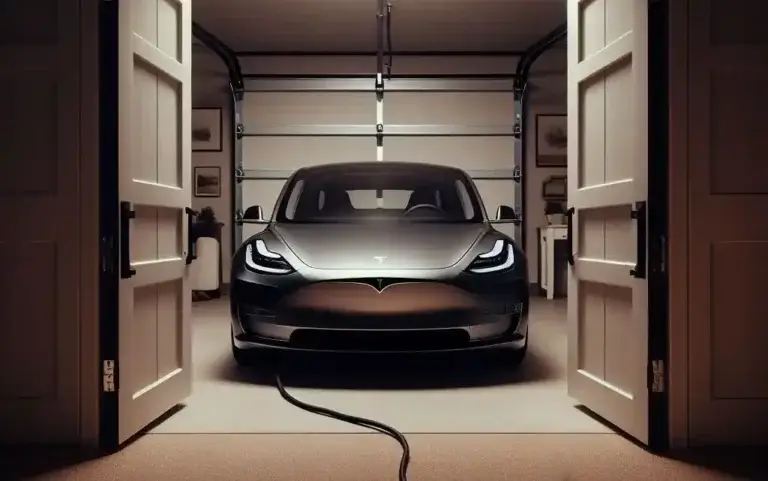What Are Tesla Solar Panels Made Of?
Tesla solar panels, powered by the energy giant that also produces electric vehicles and batteries, are an increasingly popular clean energy option for homes. But what exactly are these cutting-edge photovoltaic panels made of? This in-depth guide will examine the Tesla solar panel composition, components, efficiency ratings, and more to help you understand if Tesla solar is right for your home.
An Overview of Tesla Solar Panel Materials and Design
The sleek, low-profile solar panels produced by Tesla’s energy division are made of similar core materials as many high-efficiency photovoltaic modules on the market today. Each cell within a Tesla solar panel consists of silicon – one of the most abundant elements on Earth – that has been specially treated to allow the conversion of sunlight into usable electricity. Several solar cells then connect to form a durable glass-faced module framed by aluminum.
But while Tesla relies on proven solar technology for efficiency and reliability, their uniquely integrated approach also facilitates simple installation and continuous innovation to maximize power production. Tesla solar panels connect to the company’s custom inverter systems and monitoring platform, enabling robust energy generation and smart home energy management.
The Composition and Components Behind Tesla Solar Panels
Now let’s take a closer look at what comprises Tesla’s photovoltaic panels, including:
- Solar cells
- Encapsulant and backsheet materials
- The glass front plate
- Aluminum frame
- Junction box
Learning about these core building blocks will provide deeper insight into what makes Tesla Solar tick.
Solar Cells: Silicon Semiconductors Transform Sunlight Into Energy
The solar cells form the foundation of any photovoltaic energy system, responsible for actually converting photons from sunlight into usable alternating current (AC) electricity. Within each solar cell, raw silicon gets treated with trace amounts of material like phosphorus or boron to form a crucial light-sensitive semiconductor layer. When photons strike this prepared silicon, their energy gets transferred into electricity.
Tesla relies on monocrystalline silicon solar cells featuring higher purity and efficiency ratings than cheaper polycrystalline alternatives. The highly reliable monocrystalline cells reliably convert over 20% of incoming solar energy into electrical current. That’s nearly double the efficiency of older panel types!
Tesla’s timely cell supply acquisition ensures their panels take advantage of the latest materials and manufacturing improvements too. The steady efficiency gains from silicon cell innovations represent a key solar energy trend that Tesla solar aims to fully capitalize on in coming years.
Encapsulant Materials and Durable Backsheet Protect Critical Cell Connections
Once formed into cell strings, the sensitive electricity-generating silicon semiconductors get sandwiched between layers of protective encapsulant and an insulating back sheet on the reverse side. The durable yet transparent encapsulant bonds the cells together electrically while allowing light to pass through. Materials like heavy-duty tempered glass and weatherproof backsheet films prevent moisture and oxygen from degrading cell connections over decades of exposure.
Tesla’s solar panels again rely on industry-standard tried and tested solutions here. Their UL-listed 3.2 mm heat-strengthened front glass matches conventional panel constructions. Behind the scenes, proven ethylene vinyl acetate (EVA) encapsulants facilitate weather-resistant interconnection in hot or frigid conditions.
Aluminum Frame Provides Structural Support
No solar panel would last long without a strong outer frame to allow secure installation and protect against heavy wind or snow loads. Tesla panels feature sturdy anodized aluminum framing coupled with all-weather mounting equipment options. Four balanced frame-integrated mounting slots permit simple attachment on angled rails or flat rooftops.
Carefully engineered aluminum frames not only provide sturdiness, but allow Tesla’s solar panels to achieve an attractive low-profile form factor. Their slimline mounting apparatus further minimizes shading or height concerns. Tesla offers Frameless solar panels as well where local building codes permit an even more seamless rooftop fit.
Roof-Integrated Design Through Tesla Energy Ecosystem
As a company offering integrated renewable energy solutions well beyond standalone panels, Tesla goes further through proprietary supporting components. Each solar module connects via microinverters or traditional string inverters to smart monitoring systems. That comprehensive bundled approach simplifies installs and optimizes solar production.
Tesla panel setups incorporate the company’s own Powerwall home energy storage batteries too. That brings greater energy independence and cost savings. Tesla’s expandable ecosystem facilitates everything from public charging networks to integrated solar shingles. This start-to-finish innovation mindset demonstrates that while the underlying solar panel materials themselves may seem ordinary, Tesla’s comprehensive energy vision is anything but.
Independent Lab Testing Confirms High Tesla Solar Panel Efficiency
Those are the main constituent parts of Tesla photovoltaic panels. But how efficiently do these components actually work together to harvest energy from the sun? Comprehensive lab testing provides the definitive answer.
Tesla solar panels undergo evaluation by industry standard bodies like the International Electrotechnical Commission (IEC). Their testing analyzes attributes like product safety, materials quality, and of course solar conversion efficiency.
Across their lineup from small residential to large commercial panels, Tesla modules routinely surpass 20% efficiency. Some variants use advanced cell assemblies like their Solar Glass Roof tests even higher. That keeps Tesla solar panels competitive with top brands like LG, Panasonic, and SunPower. Plus Tesla’s solar efficiency already matches what mainstream products will offer a few years down the road.
In real-world conditions, their constantly vetted technology verifies Tesla as a reliable solar choice for homeowners wanting to cut electricity costs. Pair Tesla Solar with one of their sleek Powerwall batteries, and you can take advantage of their grid independence capabilities too.
Tesla Solar Panels: Key Specs and Rating Metrics
Now that you understand the technology inside Tesla photovoltaic solar modules, let’s examine some of the key specifications for a typical residential panel variant:
- Model: Tesla Solar Panel
- Manufacturing Location: Gigafactory 2, Buffalo NY
- Cell Type: Monocrystalline Silicon
- Size Dimensions: 39.37” x 64.96” x 1.57”
- Weight: 110.2 pounds
- Maximum Power: 440 watts
- Solar Conversion Efficiency: 20.7%
- IEC Certification: 61215, 61730
- Fire Class Rating: Type 1 / Class C Fire Rating
- Operational Lifespan: 30-35 years (with 0.5% degradation per year)
- Warranty: 25-year power and product warranty
These parameters meet or exceed figures from leading brands like SunPower or LG. Selected premium panels in their lineup test even higher thanks to cutting-edge cell assemblies. It demonstrates Tesla’s commitment to best-in-class renewable components – not surprising from a company positioned on the leading edge.
How Tesla Solar Tech Innovations Raise Reliability and Efficiency
Tesla stands poised to leverage solar energy improvements perhaps faster than any manufacturer. Their capacity for relentless innovation permeates across the entire business from AI-assisted solar shingle design to battery chemistry refinements.
Ongoing solar research both internally and via partnerships unlocks substantial efficiency and reliability gains. For instance, Tesla recently acquired a solar cell startup with technology yielding close to 25% efficiency. They also signed a collaborative agreement with battery producer Panasonic back in 2016.
Expect efficiencies for Tesla’s photovoltaic panels and integrated products to keep rising. Streamlined logistics and their panel factory help modifications reach consumers quicker too. Given such immense in-house research bandwidth and manufacturing control, Tesla solar buyers can feel confident the panels installed today surpass most rival brands – while allowing easy access to tomorrow’s innovations.
Tesla Solar Modules Use Sustainable and Ethical Material Sourcing
Solar panels seem high-tech, but as outlined earlier it’s old-fashioned silicon doing much of the heavy lifting. Ensuring ethical sourcing for such a ubiquitous element gets trickier compared with rare earth metals for instance. Thankfully, Tesla adopted a 2020 commitment to begin reporting on the procurement details and locations for key minerals used including silicon metal and silver paste.
They also publicly pledged to responsible water usage across all operations. Tesla’s solar vertical integration via their Gigafactory 2 and panel assembly centers facilitates monitoring necessary for meeting ambitious sustainability goals. Their massive expansion capabilities also ensure panel production can scale using American facilities if desired – reducing shipping carbon footprints.
In coming years, expect even more transparency around supply chains plus heightened action on recyclability and environmental consciousness from Tesla. They seem well aware that to become the world’s foremost sustainable energy purveyor, bulletproof green credentials matter just as much as efficiency innovations.
Tesla Solar Tiles and Panels: Taking A Whole-Building Approach
Tesla solar encompasses much more than traditional rooftop panels these days. They also manufacture an integrated Solar Roof solution designed from the ground up to look and perform exactly like conventional building materials while generating bountiful renewable energy. Their bundled offerings merge sophisticated software and hardware too.
It’s all meant to achieve Tesla’s overarching goal: accelerate the global shift to renewable energy including wider solar adoption. Their expanding lineup ultimately provides homeowners, businesses, and even utilities options that surpass fossil fuel infrastructure both economically and environmentally.
And Tesla’s aspirations only start there – their latest solar initiatives even look skyward to low orbit! Read on for more about how their expanding solar influence aims to transform everything from single-family housing to global communication networks.
Power Everything With Tesla Solar Energy Solutions
Tesla solar panels comprise just one element of the company’s far-reaching renewable energy agenda to power the future sustainably. Their ever-broadening solar and battery products integrate into a steadily expanding ecosystem seeking to supplant fossil fuels outright.
Beyond rooftops, Tesla solar and battery innovations now scale to entire residential neighborhoods, commercial districts, and municipal power grids. Elon Musk also founded SpaceX, working towards a satellite internet constellation using space-based solar power generation. No matter where human civilization expands next, Tesla wants their zero-emissions energy infrastructure to enable it.
Start Your Journey With Tesla Premium Solar Panels
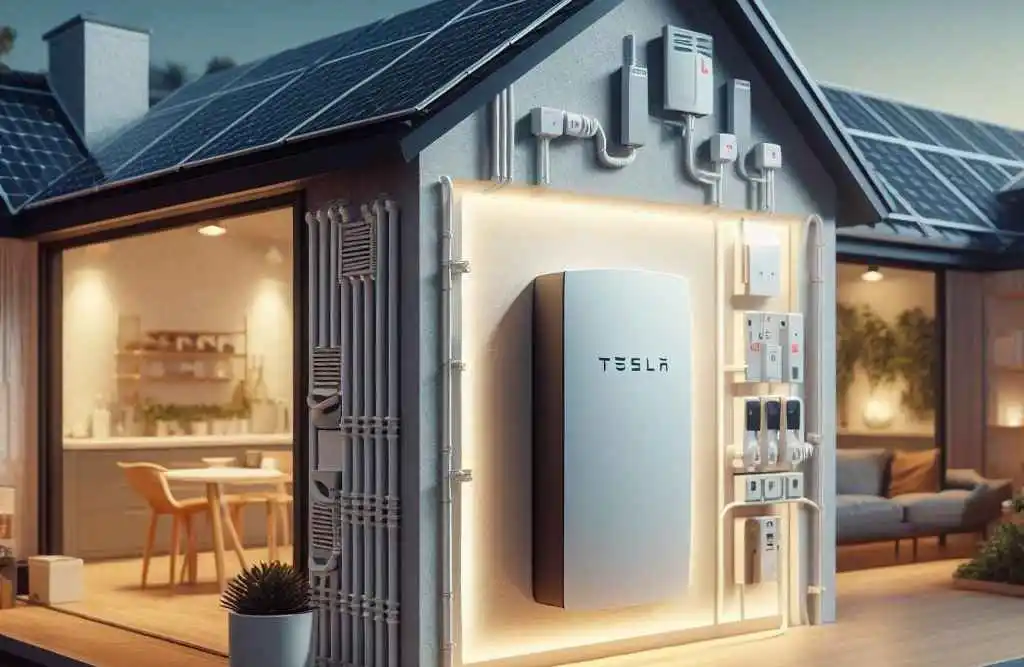
Hopefully, this guided tour from silicon semiconductors to orbital solar arrays gives you a fresh perspective on Tesla Energy’s renewable vision. Their polished solar panels may seem familiar on the outside, but revolutionary thinking permeates every level of their design and business strategy.
Want to join the Tesla Energy movement? Reach out for quotes on their award-winning solar options customized precisely for your home. Their panels coupled with smoothly integrated Powerwall batteries make living fossil fuel-free a stylish reality.
What Factors Impact Tesla Solar Panel Efficiency?
Tesla manufactures premium solar panels to maintain high efficiency even when conditions are not ideal. However, several variables beyond Tesla’s control can still affect photovoltaic module performance. Being aware of these solar panel efficiency drivers helps homeowners consider the best positioning and configuration for maximum energy production.
Solar Irradiation and Weather Patterns
The most obvious factor determining Tesla solar panel output connects to how much sunlight strikes its surface. Areas with consistently clear and sunny weather will harvest substantially more power. Cooler climates can actually help in certain situations though, as panels operate more efficiently in lower ambient temperatures.
Tesla solar options for residential and commercial customers take irradiation levels into account from the start. Their proprietary remote solar studies incorporate static data like average regional sunny days along with projected climate shifts. That ensures current and future efficiency calculations achieve accuracy.
Panel Orientation and Tilt Angles
How Tesla solar panels get mounted constitutes a major efficiency determinant within homeowners’ control. Optimal panel directionality points True South in the northern hemisphere, allowing maximum daily sun exposure. Tilt angles that coincide with a site’s latitude typically work best for seasonal adjustments.
Tesla performs intensive modeling to mock up the solar yield potential for all your usable roof space and terrain using True North facing maps. Their proposal considers obstructions too that could impede solar collection during peak daylight periods. That facilitates tailored positioning and angular adjustments to wring out every last drop of available energy.
Shading Avoidance From Structures or Flora
Speaking of obstructions, even minor shade interference across Tesla solar panels risks substantially cutting electrical output. The company’s proprietary shading tools highlight which roof areas and times suffer from reduced light exposure. Special bypass diode wiring inside each panel attempts to minimize shading losses when they do occur.
Careful early planning again pays dividends for long-term efficiency. Any trees or ancillary structures that could ultimately block the sun get evaluated during initial site visits. Tesla experts work to optimize panel placement accordingly for maximal roof exposure now and in the years ahead. Keeping vegetation trimmed around panels helps retain efficiency too.
Choice of Premium Tesla Inverters
An inverter plays a pivotal role in solar arrays by transforming the DC generated by photovoltaic modules into standard household AC power. Tesla provides a choice of top-tier string inverter or microinverter systems to match their panels. The appropriately sized inverters ensure efficient, reliable AC conversion of all collected energy.
Microinverters offer module-level yields for maximum harvest from each panel. Yet centralized string inverters minimize complexity with higher lifetime system capacity for large installs. Either inverter solution couples with the Tesla app platform for effortless energy monitoring and analysis. That empowers homeowners to understand solar efficiency patterns across equipment configurations.
Why Tesla Solar Panels Score “Very Good” For Efficiency
Independent product testing specialists like EnergySage rigorously evaluate the real-world performance attributes of Tesla photovoltaic panels. Their comparative efficiency analysis named Tesla solar as “Very Good” – strong praise up against 30+ competing manufacturers.
Such high marks reflect Tesla’s usage of sophisticated monocrystalline cells in a smart module layout. Optimization for the broader Tesla solar ecosystem with integrated batteries, software, and even regional production also bolsters overall efficiency.
Consider Tesla’s solar modules versus the merely “Good” categorized Q Cells, REC Solar, and Mission Solar brands. Tesla bests their efficiency by a solid 2-3% thanks chiefly to today’s leading silicon cell implements. Their capacity to rapidly translate next-gen PV cell improvements into consumer products keeps Tesla Solar positioned high on the efficiency curve too.
So while marginally pricier than some “Good” tier players, Tesla solar panels deliver substantially more free energy thanks to electrical and operational optimization. Quantifying that long-term efficiency payoff clarifies why Tesla rates as a smart investment for homeowners serious about maximizing solar system yields.
How Much Energy Do Tesla Solar Panels Produce?
Tesla solar panels size up as capable, reliable energy producers that power homes across widely varying environmental conditions. Total solar output depends on equipment ratings, placement, and localized weather patterns. By merging optimized silicon photovoltaics with sophisticated tracking software, Tesla enables robust harvesting tailored to your situation.
Their smart solar platform calculates compelling projections for energy production starting from your address alone. You’ll also receive custom quotes particular to available roof space, regional weather, and local electricity costs. These convenient modeling tools make it easy to forecast how much free solar energy Tesla systems can offer based on Terawatt-hours (TWh) of potential annual solar production.
Tesla Solar Panels For Small Households
- Typical system size: 5-9 kWh
- Solar panels needed: 16-30
- Yearly solar energy production estimate: 8,000 – 15,000 kWh
Tesla’s solar options work great for households with lower electrical demand. Their projected annual generation for a modest system meets about half to 3/4 of total use for frugal homes. Adding just a few batteries provides backup reserves too.
Tesla Solar Panels For Large Homes
- Typical system size: 12-27 kWh
- Solar panels needed: 40-90
- Yearly solar energy production estimate: 17,000 – 30,000 kWh
Larger houses with bigger appetites for appliances, A/C, and electronics get powered ideally with ample Tesla solar panels. Their bigger roof lets Tesla install higher capacity arrays to provide the beefy electrical loads these homes require.
Tesla Solar Panels For Small Businesses
- Typical system size: 30-130 kWh
- Solar panels needed: 100-300
- Yearly solar energy production estimate: 30,000 – 150,000 kWh
Shops, restaurants, and other small commercial enterprises thrive running on Tesla’s solar for-business offerings. These sizable solar panel installations generate abundant renewable energy while minimizing grid dependence.
Based on location and system specifics, Tesla solar panels reliably churn out thousands of kWh yearly through extreme heat, cold, or storms. Their intelligent monitoring constantly tracks and safeguards production too. For homes and companies alike, Tesla Solar supplies plentiful solar power purpose-built for your situation.
How Do Tesla Solar Panels Connect?
Constructing a fully operational solar array requires securely interfacing many discrete photovoltaic panels together into an integrated DC-generating system. Tesla solar experts handle these complex electrical connections along with configuring the necessary inverters, battery units, and monitoring hardware.
Here is a high-level overview of how Tesla solar panels interface into a working renewables system:
- Panels connect via MC4 cables in sequence to carry gathered DC
- Splice boxes consolidate string inputs before routing aggregated DC output to the inverter station
- Inverters transform PV panel DC into usable AC to power your home directly
- Excess solar energy stores in Powerwall batteries for overnight usage
- Tesla solar monitoring and smartphone app controls activation based on production/demand
The deceptively straightforward process of “bolting panels onto rooftops” therefore masks an extensive under-the-hood energy management ecosystem. Mastering that system integration fuels Tesla’s recognized leadership position for premium solar installations.
For homeowners though, all that proprietary complexity conveniently recedes into the background when Tesla installers arrive. Their solar panels snap securely atop your roof to harness free energy year after year while you control everything easily from your phone.
Comparing Tesla Solar Roofs and Panels: Which Option is Better?
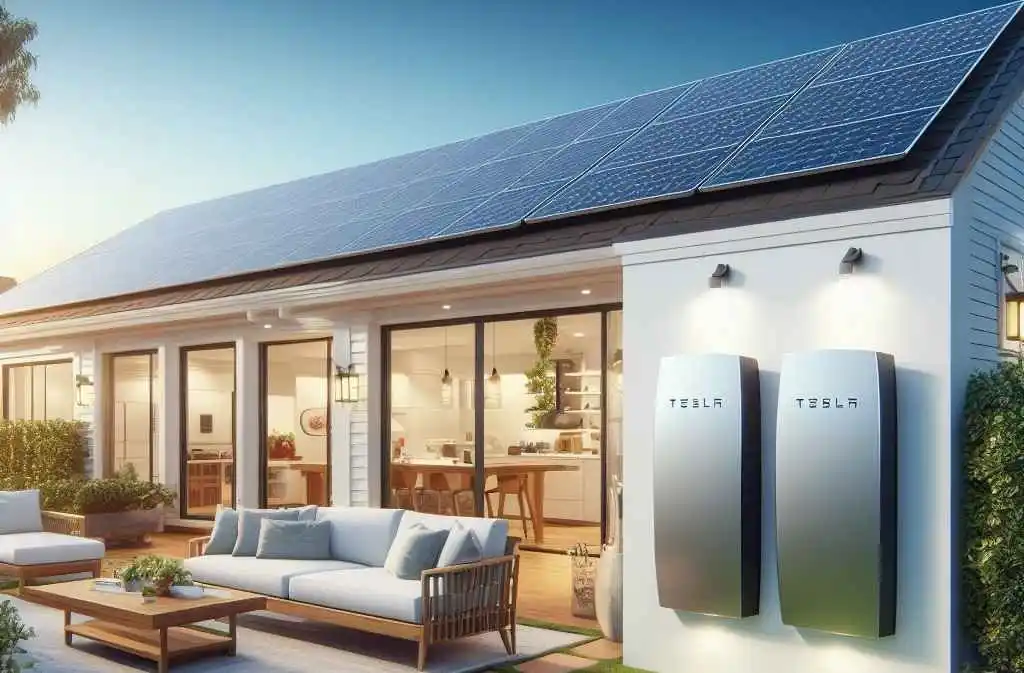
Alongside conventional solar panels, Tesla also developed their Solar Roof solution designed from the ground up to appear indistinguishable from standard roofing tiles. The integrated glass photovoltaic shingles even safeguard against leaks or water damage better than ordinary materials. But choosing between the Tesla Solar Roof or regular panels still leaves many homeowners wondering how to pick between two great sustainable options.
In practice, determining if the upgraded Solar Roof works better over traditional solar panels depends greatly on your specific home as well as your budget. Here is an overview of key pros and cons to consider for both varieties:
Tesla Solar Panels
- Less expensive ($15,000 to $25,000 for a typical home)
- Faster installation
- Simple value proposition as a renewable add-on
- Can combine with Solar Roof if more panels are needed later
Tesla Solar Roof
- Seamless aesthetic as integrated roofing replacement
- Enhanced leaks/damage protection
- Maximizes production from available rooftop space
- Higher cost ($30,000+ for typical home)
For homes needing a replacement roof anyway, Tesla’s integrated shingle solution wins on essentially every measure. Their sleek solar roof rolls essential reroofing costs into a single durable upgrade that generates free solar energy for decades while safeguarding against leaks or other damage.
Alternatively, as simple rooftop augmentations, traditional panels work great at lower upfront pricing. Tesla’s mounting apparatus attaches securely and its low-profile panels blend into contemporary architecture. Later on, integrating select solar shingles from Tesla’s roof catalog bolsters renewable generation even further.
Ultimately Tesla Solar opens up outstanding carbon-free home energy potential whether via integrated Solar Roof tiles or standard PV modules. Take advantage of their free consultations to determine which approach fits best.
Why Tesla Had To Build Their Own Solar Panel Factory
In early 2016, Elon Musk took to Twitter in search of American construction firms able to build a turnkey Model 3 auto factory in under two years. He received no bids deemed acceptable. So Tesla instead opted to construct that 5 million square foot facility themselves in Nevada, completing the Gigafactory 1 complex ahead of schedule.
Now in hindsight, perhaps contractors lacked faith in Musk’s seemingly impossible objectives. But Tesla’s overriding lesson revolved around retaining absolute supply chain oversight and control whenever feasible. That soon prompted bringing key solar energy production in-house as well.
By late 2016, Tesla formally acquired panel maker SolarCity in a $2.6 billion consolidation move. Their bullish vision? Vertically integrate panel manufacturing just like vehicles and batteries to revolutionize solar adoption. Tesla commenced construction on Gigafactory 2 in Buffalo NY shortly thereafter specifically to churn out more panels in less time using less cash.
The sprawling 1.2 million square foot facility now runs 24/7 with advanced automation to crank out 1000 premium Tesla solar modules daily. Ongoing upgrades support exponentially higher volumes too as their energy products scale globally. By bypassing conventional solar producers, Tesla unlocks game-changing improvements for reliability, efficiency, and economies of scale.
It also empowers incorporating cutting-edge production techniques like tailored spectral selectivity and advanced encapsulation immediately. Plus Tesla avoids supply bottlenecks, tariffs, or transport headaches by crafting American-made panels near the robust consumer markets craving them most. So while risky, their solo solar panel factory gambit seems ready to pay off in a very big (and sustainable) way.
Tesla Solar Charges Ahead With Next-Gen Tech Innovations
Even today’s best commercial solar cells still waste a lot of potential through suboptimal spectral capture, airflow, or temperature management. That requires teams dedicated to pioneering advancements cost-prohibitive for most manufacturers. Enter Tesla. Their latest solar innovations push efficiency rates ever closer toward physical limits through uniquely integrated PV module enhancements:
Tuned Low-Iron Glass
Tesla’s compositionally tuned glass transmits more visible light versus standard materials while blocking infrared. That improves photon capture for better power yields.
Liquid Cooling
Specialized liquid cooling integrated directly into certain Tesla solar panels moderates temperature for optimum efficiency even on sweltering days.
Backside Cell Texturing
Light-trapping nanostructures etched onto the rear silicon surface minimize energy lost as heat, not electricity.
Selective Solar Spectrum Splitting
Experimental selective coatings optimize high-energy blue wavelength absorption while reflecting less useful bands to neighboring cells.
Though not yet economical for wide-scale implementation, such trailblazing concepts highlight Tesla’s solar innovation mentality. Expect efficiency levels from their premium panels to keep rising thanks to intense R&D on next-generation module materials and assembly techniques.
Tesla “Project Volta” Solar Research Partnership With SunPower
No company possesses unlimited resources for diving into capital-intensive solar research alone. That is why Tesla announced a collaborative solar initiative coined “Project Volta” alongside America’s leading panel producer SunPower in early 2022. This partnership pools together an all-star team of over 50 material scientists, solar experts, and electrical engineers specifically to propel commercial efficiency rates closer to 30 percent.
Project Volta constitutes the latest in a string of solar advancement partnerships for Tesla. But teaming with SunPower’s 35 years of solar-specific R&D experience brings tremendous mutual advantages. Their recent debut of a record-setting 35.5 percent efficient residential solar panel confirms SunPower’s chops. Such an efficiency leap could save homeowners thousands in equivalent carbon-based electricity costs over a system lifetime.
Tesla’s knack for swiftly integrating cutting-edge panel and silicon cell breakthroughs at massive economies of scale should allow those staggering efficiency numbers to exit the lab for consumer rooftops faster than otherwise possible. When Project Volta eventually bears fruit, expect high-efficiency releases from both the SunPower and Tesla solar catalogs to follow not too far behind.
Why Tesla Believes Solar Energy Beats Nuclear Power
The decarbonization experts at Tesla broadly recognize renewable energy forms like solar offer faster, cheaper, and cleaner means for zero-emission electricity over bulky nuclear plants. But why specifically is distributed photovoltaic generation combined with batteries superior in their eyes compared to formidable nuclear?
Cost Competitiveness
The bottom line, achieving equivalent power capacity today costs 5-10 times less through solar versus nuclear. And lifetime operating costs for nuclear remain mired as much as 5 times higher per kilowatt-hour too.
Quicker Deployment
Big nuclear facilities suffer permitting, political barriers, and decade-long construction timelines. Solar farms and rooftop PV were erected within months using standardized equipment.
Grid Resilience
Centralized nuclear reactors present single points of failure. Dispersed solar bonded with batteries fosters decentralized stability and blackout resistance.
Energy Responsiveness
Nuclear plants lack output flexibility to meet real-time demands. Solar inherently scales instantaneously while integrating storage rapidly balances intermittent generation.
Safety and Environmental Risks
Despite robust containment systems, radioactive catastrophe potentials persist with nuclear. PV solar carries no similar meltdown/contamination hazards.
As their position statements attest, Tesla sees solar and batteries leading the charge over nuclear toward sustainable energy independence. Expect their expanding battery-supported solar options to increasingly marginalize the need for any new nuclear plants worldwide.
Will Tesla Solar Panels Power Mars Colonies Someday?
When CEO Elon Musk first founded SpaceX over 20 years ago, his central motivation revolved not so much around Earthly space tourism. Instead, Musk sought to catalyze affordability innovations bringing humanity multiplanetary – starting with a Mars colony. Rocket reusability breakthroughs brought that dream nearer to reality. But any off-world settlers still need plentiful power, preferably harnessing extraplanetary energy sources.
Craters near Mars’ poles allow great spots for positioning solar arrays that stay sun-drenched over 85 percent of the time. SpaceX wants to eventually ferry life-supporting equipment like solar panels from Tesla’s catalog as mission-critical gear for those initial expeditions. Leveraging energy infrastructure already proven on homes here for establishing Martian outposts simply makes practical sense.
The extreme radiation and temperature swings await beyond Earth’s protective atmosphere pose challenges no terrestrial solar installation contends with, however. So Tesla aims to torture test their photovoltaic designs specifically for reliability within hazardous planetary conditions. Succeeding could set SpaceX voyagers up to thrive on Mars using panels evolved from hardware bolted on rooftops today.
Tesla Solar Makes Steady Progress Towards Sustainable Energy Dominance
With immense momentum already transforming global electric transport and battery storage, Tesla takes no half-measures in pursuing their connected renewable energy vision. Their solar vertical marks arguably the most outwardly visible component so far – with millions spotting shiny rows of premium Tesla-badged modules enhancing neighborhoods worldwide.
But Tesla is just getting started harnessing our solar system’s immense clean power reserves. Behind the scenes, boundary-pushing initiatives like panel material breakthroughs, integrated roof shingles, and even forays into space pave the way towards sustainably fueling society at large. Homeowners reaping benefits today from record low solar pricing and battery efficiency rates Tesla’s relentless progress to thank.
Hopefully, this fully rounded examination provided helpful knowledge about Tesla solar technology present and future. Please connect for custom quotations matching their premium sustainable panels flawlessly to your home’s needs and budget. Join the clean energy movement accelerating all around!
Conclusion: Why Tesla Solar Tech Points The Way Forward
Tesla makes an increasingly compelling case for homeowners seeking energy independence and electricity savings through premium solar options. Their expertise transcends merely bolting efficient panels on rooftops as a one-off purchase too.
Genuine integration reigns across Tesla clean energy deployments instead. Sophisticated components like skylight-style solar glass roof tiles, smooth home battery integration, customized inverters, and proprietary monitoring apps merge into living architectures optimizing renewable usage long term.
Tesla constitutes no newcomer either, able to trace their solar business origins over 15 years even before the SolarCity acquisition. Today as then, their core methodology remains diligently focused on financial viability without subsidies amidst a supportive customer experience. Sensible solar is finally here, ready to power forward-looking households using technology’s best Earth has to offer.
Frequently Asked Questions
How much roof space do I need for Tesla solar panels?
Tesla solar experts recommend having at least 500 square feet of appropriate roof space to install an adequately sized solar array. That facilitates enough photovoltaic panels with ample clearance for access and maintenance. Tesla’s proprietary 3D modeling maps out solar productivity potential across every section of your home’s usable area too.
Do the batteries last as long as Tesla solar panels?
Yes, Tesla warrants their integrated Powerwall home battery units to reliably deliver daily charging/discharging cycles for at least 10-15 years when paired with their solar equipment. Preventative maintenance like periodic inspection and software updates may extend operational lifetime closer to 20 years.
What hidden fees or costs apply to Tesla solar panel installations?
Tesla prides itself on price transparency throughout the solar sales process without bait-and-switch maneuvers. Their detailed quotes incorporate all necessary equipment, permits, labor and monitoring hardware expenses upfront. Additional costs only arise from rare new inspection requirements or significant site changes triggering rework.
Can I recharge a Tesla car with Tesla solar panels?
Absolutely! Their solar offerings integrate seamlessly with Powerwall batteries providing abundant clean energy for BREAKING driveways and garages. Tesla vehicle owners enjoy the ultimate closed-loop driving in the sunshine. Add their bi-directional home inverter to utilize the EV batteries themselves for whole-home backup if needed too.
How long do Tesla solar panels last?
Tesla engineers their photovoltaic modules to continue delivering over 90% of the original rated electrical output for at least 30 years after installation. Many homeowners experience closer to 35 years of productive solar energy generation with reasonable care and maintenance. Tesla also warrants panels to remain fully functional for 25 years.


